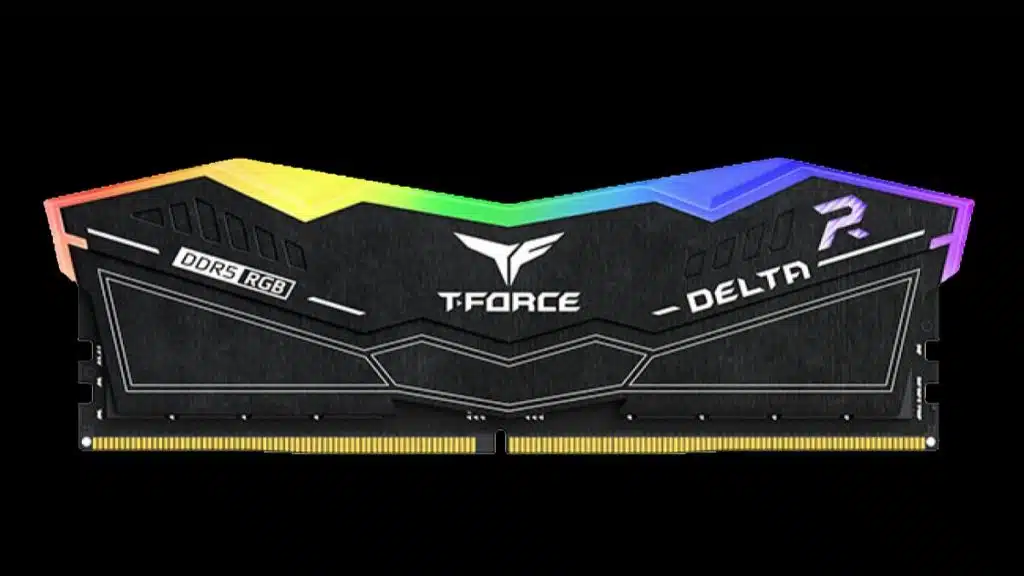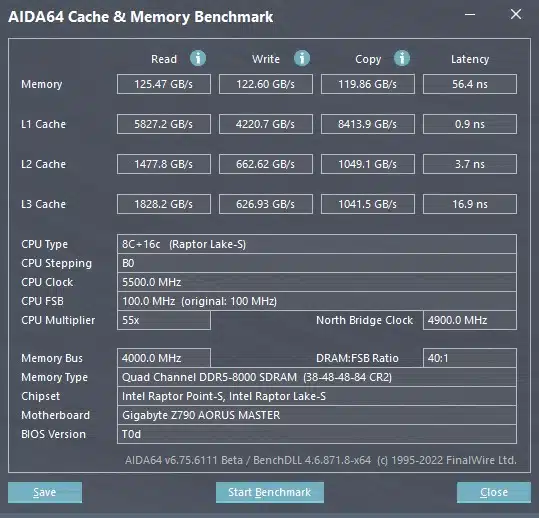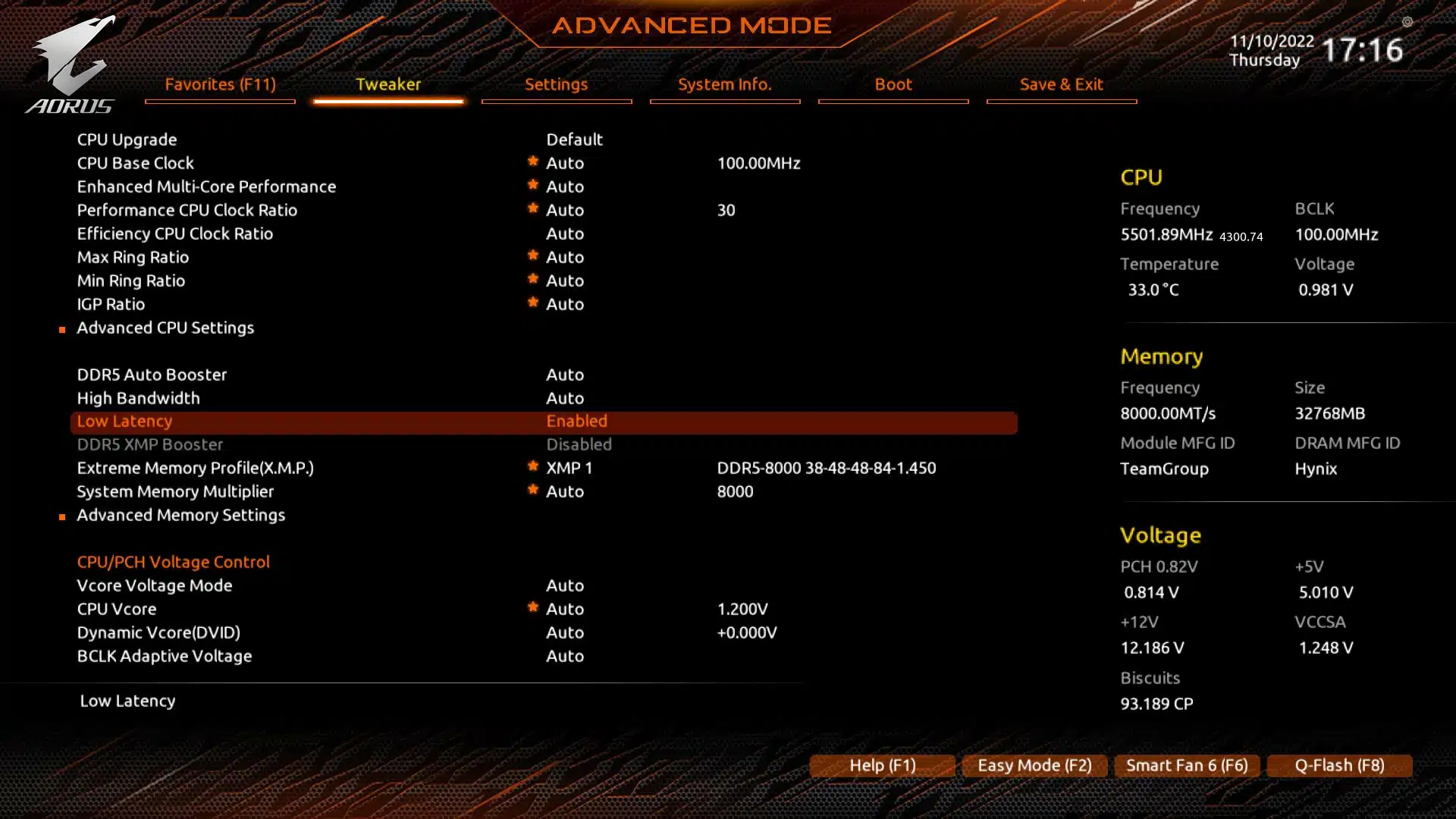
GIGABYTE and TEAMGROUP have announced that they have achieved XMP DDR5-8000 on Z790 AORUS XTREME and Z790 AORUS MASTER motherboards. AIDA64 and CPUz results show that an Intel Core i9 13900K 8C/16T Raptor Lake-S CPU running at 5.5 GHz was used. Reported memory transfer speeds were 125.47 GB/s (Read), 122.60 GB/s (Write), and 119.86 GB/s (Copy), with a latency of 56.4 ms. Timings for the SK Hynix A modules were 38-48-48-84 at 1.45v.

It’s always been challenging to constantly exceed the high-frequency record of memory, and stable motherboards and high-performance memories make a perfect team to accomplish this difficult task. To provide superior performance and user experience, GIGABYTE has been working closely with TEAMGROUP on the record-breaking performance from DDR5-7600, DDR-7800, to XMP DDR5 8000. The detailed memory information is listed in the memory support list of the motherboard, users can check on the site for the best performance matrix on the Z790 platform.



“Meanwhile, GIGABYTE’s exclusive Low Latency and High Bandwidth features can further raise total bandwidth while reducing latency on XMP memories to provide superior memory performance without changing the memory clock. Enhanced with the new generation Shielded Memory Routing and low signal-loss PCB design, the internal and external signal loss or interference are effectively reduced to ensure blasting-fast DDR5 memory speed and lead to the breakthrough performance of XMP DDR5-8000 with T-FORCE DELTA RGB DDR5.“
GIGABYTE and TEAMGROUP have each been working to push the limits of what users can expect from DDR5 memory out of the box. GIGABYTE recently announced it managed even higher speeds with overclocked memory on its Z790 AORUS TACHYON motherboard where it achieved XMP DDR5-8333 and DDR5-9300, with air cooling. While DDR5 may still be in its early stages of adoption, and still quite expensive, it clearly has a growing potential for the fastest, most stable, speeds seen yet for off-the-shelf memory.
